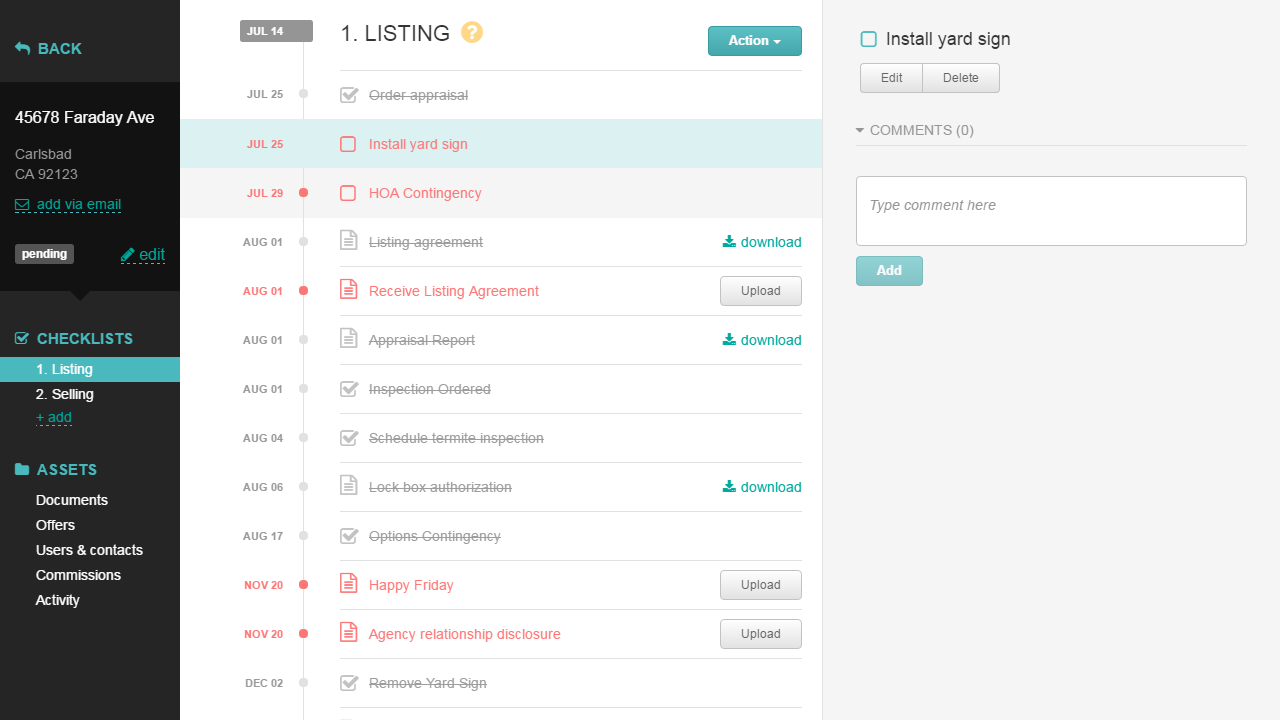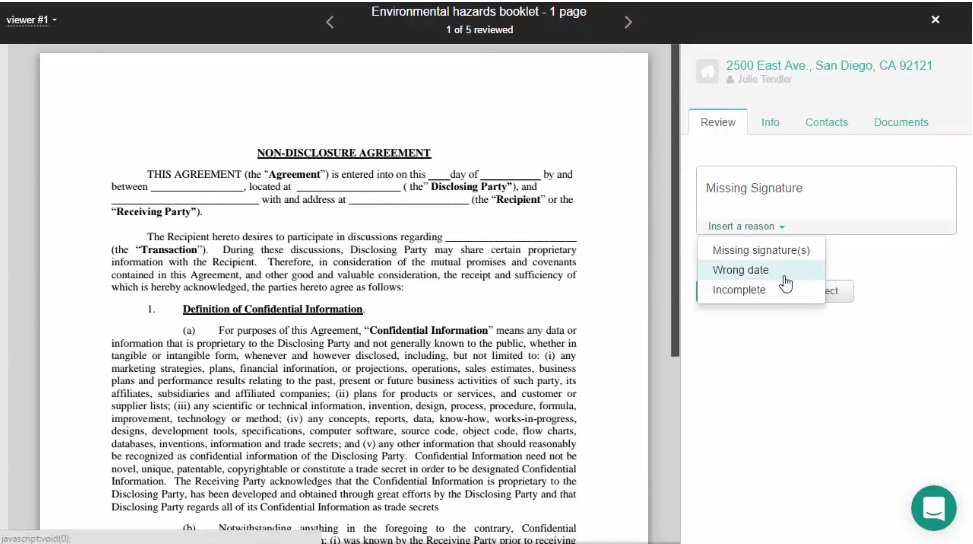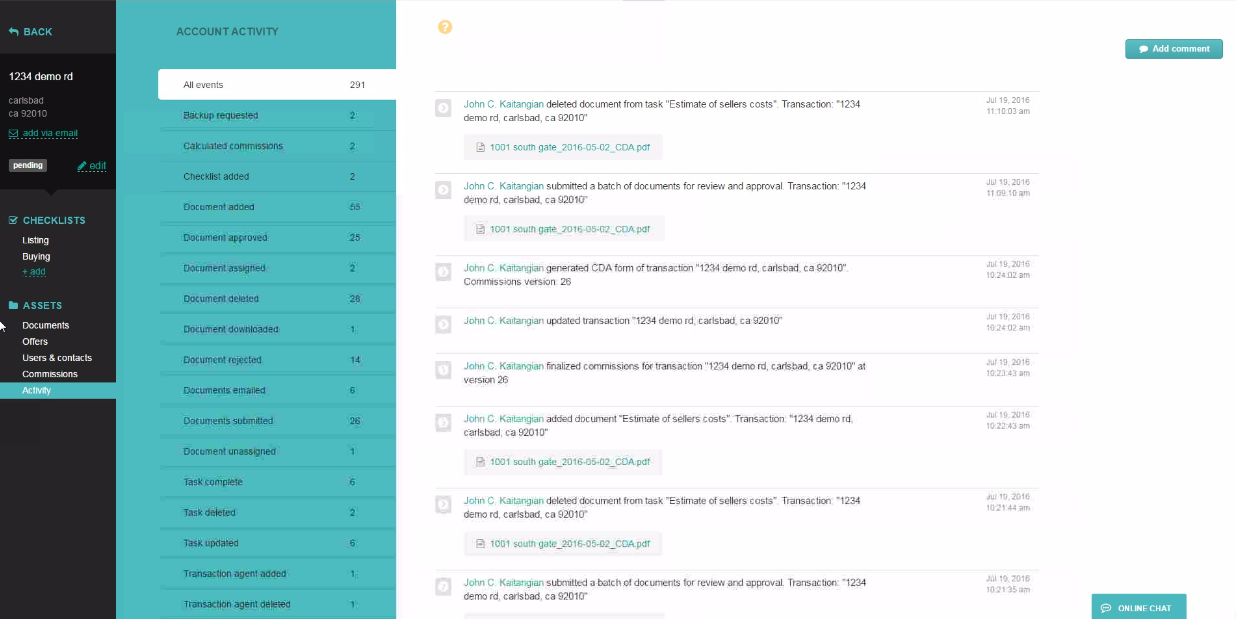You are viewing our site as a Broker, Switch Your View:
Agent | Broker Reset Filters to Default Back to List3 Components of Transaction Compliance and How to Manage Them
February 19 2017
What happens if your brokerage is sued because one of your agents allegedly fails to materially disclose something relevant to a transaction?
If your transaction management software offers compliance features, you needn't worry. Compliance capabilities let brokers manage agents workflow and set required tasks, create a document approval process, and reference activity logs.
Let's dig in to learn more about how each of these features work.
1. Managing Agent Workflow
Checklists are the broker's first line of defense in making sure an agent not only completes all paperwork correctly, but that they also complete tasks related to the success of a listing—like ordering photographs and installing the yard sign—in a timely manner.
"The first result of using transaction checklists is that it helps your agents to stay organized and save time," says Andrew Chishchevoy, founder of Brokermint, a back office solution with built-in checklists and other compliance features. "The end result is compliance; checklists ensure that you have all your documents in place. Basically, brokers and admins can sleep well at night and make sure they have all the needed files and know that if something happens, they're safe. Whether they have 15 agents or 150, checklists ensure that everything is structured, safe and secure."
Most transaction management solutions have checklist capabilities built in. Your solution may have pre-made checklists included that you can customize, or you may have to build checklists from scratch. For agents, they look like a chronological task list that lists what tasks/documents are coming up, due now, or overdue. Here's what a checklist looks like in Brokermint:

2. Document Approval
Once an agent has completed all necessary transaction paperwork, they submit it to their broker for review. Before digital solutions, this required a broker to be highly organized. With transaction management solutions, this process has been simplified.
In most programs, brokers will see a list of transactions that have been submitted for approval. They can click into a transaction to review each document and approve or reject each one. In Brokermint, this is accomplished with a few clicks. Brokers can simply hit the "Approve" button, or to reject a document, choose a reason why they're rejecting a document (or write in a reason), and instantly return it to the agent to correct.

Agents are notified of the broker's approval or rejection via email and on their Brokermint dashboard. They can then submit correct or missing documents from the interface.
3. Activity Logs
Finally, and perhaps most importantly from a legal standpoint, there are activity logs. All transaction management and esignature solutions typically offer audit logs. They're a digital record of who signed what document, where, and when, and are used to prove the validity of signed documents in legal disputes.
Some--but not all--transaction management programs offer agent activity logs, too. This lists everything an agent has done in a transaction--which documents they uploaded, changed, or deleted and when; checklist items completed, etc. The level of detail recorded varies. In Brokermint, all agent activity is logged down to the keystroke. You can see the level of detail provided in the image below:

Wrapping Up
These are the three major compliance features offered by modern transaction management solutions.
For a hands-on look at how Brokermint manages compliance issues, check out their free 30-day trial for brokers. RE Technology readers also receive 10% off subscription costs for life!









